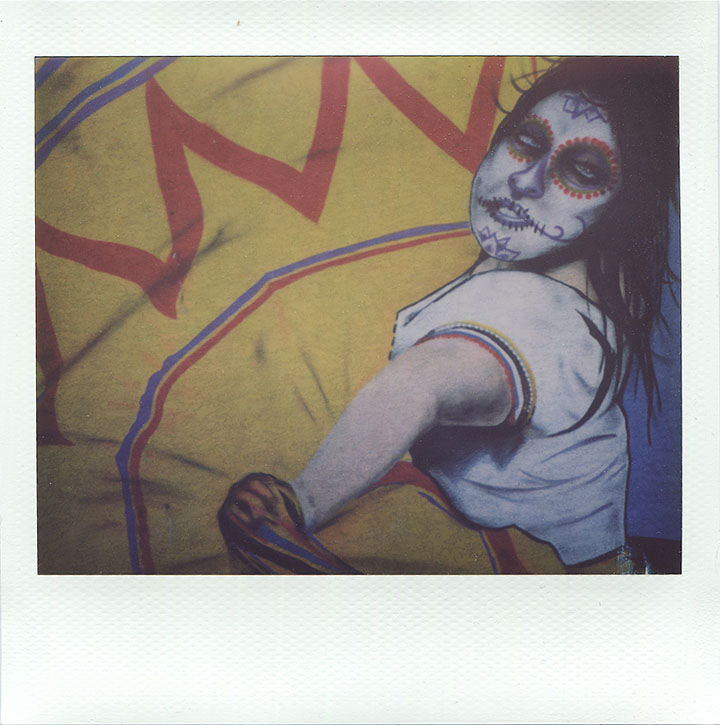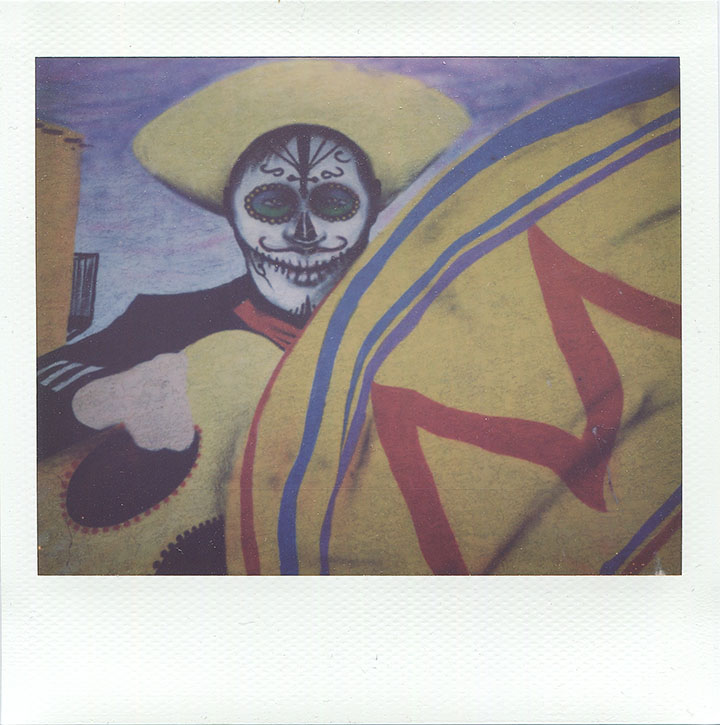Rocky Ford is a farming community of just over 4,000 people along U.S. Highway 50, about 50 miles or so east of Pueblo, in the lap of southern Colorado’s Arkansas Valley. It’s known best for its signature crops of watermelon and cantaloupe. The propagation of melons is so engendered in the local culture, its high school mascot is the Meloneer, easily one of most unique mascots in the state (actually, I’m shocked the town hasn’t appropriated the logo for marketing purposes–it’s that cool).

There’s a building in town along westbound Highway 50 with a mural painted on its side that’s hard to miss. And no, it isn’t a meloneer. It features a pair of strumming mariachi and a folklorico dancer. What makes it so eye-catching is that it the three characters are wearing calaveras makeup, the kind typically seen on dia de los muertos, or day of the dead.
And though the mural may not be expertly executed, it’s a striking display.

Now Rocky Ford has never impressed me as a hub of any sort of cultural expression beyond the agrarian. I’ve always considered it more John Deere than mariachi, even though the town’s nearly 60 percent hispanic. So I shouldn’t have been surprised to have come across a piece of public art that underscores a significant facet of hispanic culture in such a tiny town.
But I was.